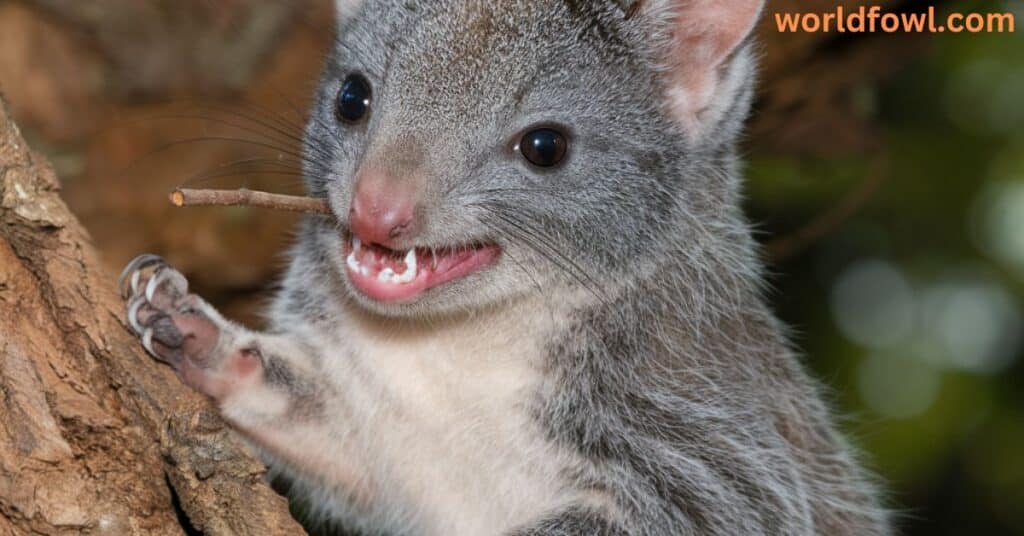Quolls are some of Australia’s most fascinating and mysterious creatures. Often referred to as “native cats,” these nocturnal marsupials from the Dasyuridae family have a reputation that sparks curiosity and intrigue. While many people know about quolls as wild animals, there’s still a lot of uncertainty about whether they pose any danger to humans. One of the most common questions about quolls is: Do quolls attack humans?
In this in-depth exploration, we will thoroughly examine quoll behavior, their natural instincts, their interactions with humans, and much more. You’ll gain a deeper understanding of quolls as carnivorous predators and why their interactions with humans are rare, but not impossible. We’ll also discuss how quolls contribute to their ecosystems, their conservation efforts, and the importance of preserving these creatures for future generations.
By the end of this article, you’ll have a clear and comprehensive understanding of quoll behavior, quoll defensive behavior, and the truth about whether these wild creatures can attack humans.
What Are Quolls?
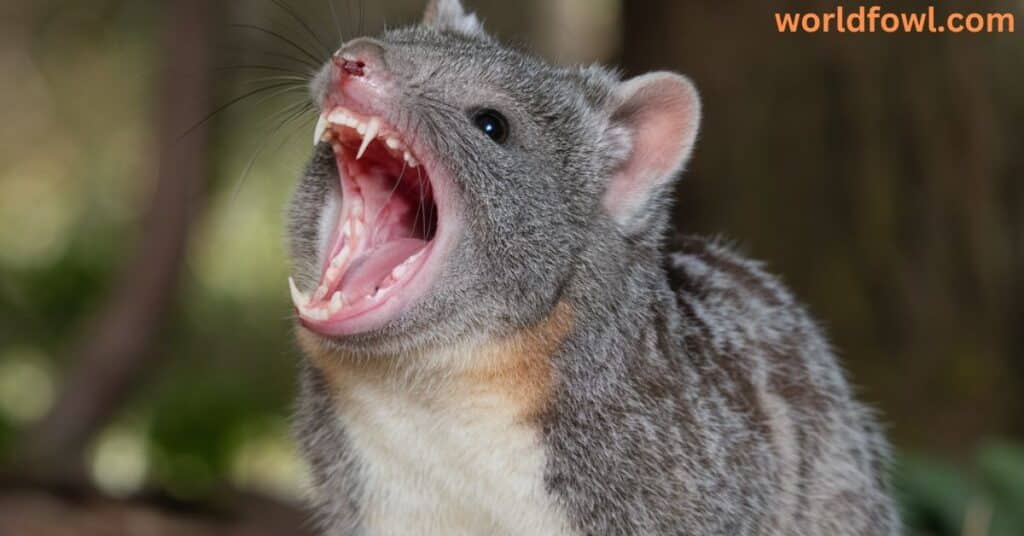
Before diving into their behavior and potential threat to humans, it’s essential to understand what quolls actually are. Quolls are carnivorous marsupials belonging to the Dasyuridae family, which also includes animals like the Tasmanian Devil, sugar gliders, and other small predatory species. Often called “native cats” due to their physical resemblance to felines, quolls have much more in common with other nocturnal marsupials than they do with domestic cats.
Species of Quolls
There are four primary species of quolls found in Australia and New Guinea:
- Northern Quoll (Dasyurus hallucatus): This species is found in the northern parts of Australia and is the most endangered of the quoll species.
- Eastern Quoll (Dasyurus viverrinus): Found primarily in Tasmania, this quoll has faced significant population decline but is being reintroduced to mainland Australia.
- Western Quoll (Dasyurus geoffroii): Common in Western Australia, this species is also under threat due to habitat destruction and predation from introduced animals.
- Tiger Quoll (Dasyurus maculatus): The largest of all quoll species, the Tiger Quoll has a more expansive range across southeastern Australia, although it too faces challenges from human encroachment.
Each of these quoll species has unique characteristics, but they share similar behaviors, physical traits, and hunting habits.
Physical Characteristics of Quolls
Quolls are often recognized for their spotted fur, which provides them with excellent camouflage in their natural habitats. They have sharp claws and teeth, which make them excellent predators. Their physical build enables them to climb, jump, and move stealthily, which is essential for their nocturnal hunting.
Quoll Behavior and Nocturnal Habits
Quolls are solitary creatures, spending most of their time hunting for food or seeking shelter in hollow trees or rock crevices. They are highly territorial, and males typically roam large areas in search of mates. Despite their solitary nature, quolls do interact with one another, especially during the breeding season.
See Also : Do Kangaroos Attack Humans?
Quoll Habitats and Distribution
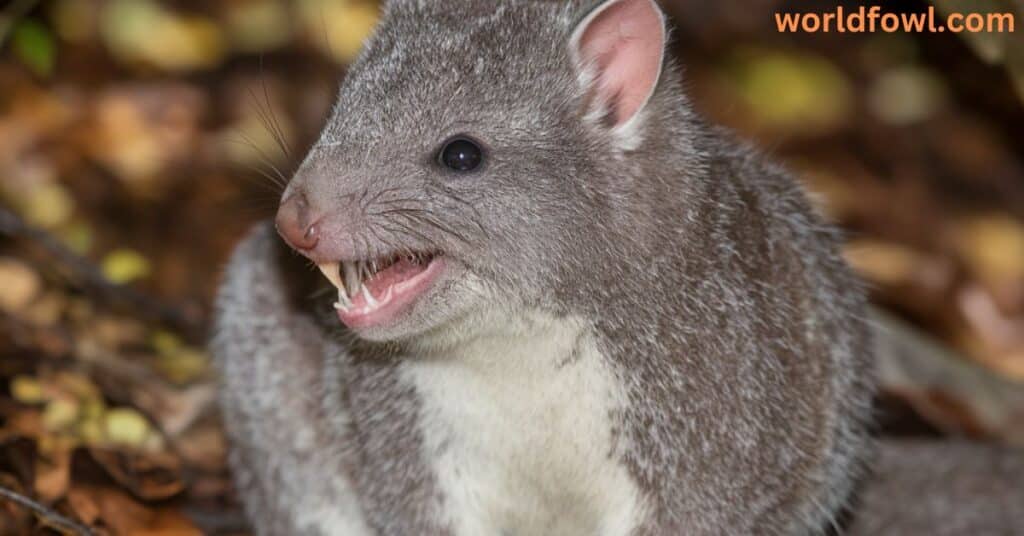
Quolls are native to both Australia and New Guinea, and they inhabit a wide range of ecosystems, from dense rainforests to dry woodlands. Their habitats include remote areas, such as rainforests, woodlands, savannas, and even rocky outcrops, depending on the species.
Habitat Preferences of Quolls
Quolls are carnivorous predators and scavengers that require specific environments to hunt and thrive. Each species has adapted to different habitats, but they all prefer locations that provide sufficient cover and a stable food supply.
For example, the Eastern Quoll is most commonly found in the cool, moist environments of Tasmanian rainforests, while the Tiger Quoll is often found in the more open woodlands and savannas of southeastern Australia. Northern Quolls, on the other hand, inhabit the rocky outcrops and dry woodlands of northern Australia.
- Rainforests: Lush, densely vegetated areas, ideal for Eastern Quolls.
- Woodlands: Found in the Western Quoll and Tiger Quoll habitats.
- Savannas and Rocky Outcrops: Preferred by the Northern Quoll, where they can hunt smaller animals and scavenge in open spaces.
These natural habitats are essential for the survival of quolls, providing them with the food and shelter they need to thrive. Unfortunately, habitat loss caused by human development, deforestation, and the introduction of non-native predators has led to a decline in quoll populations.
See Also : Do Wild Pigs Attack Humans?
Quoll Diet and Hunting Techniques
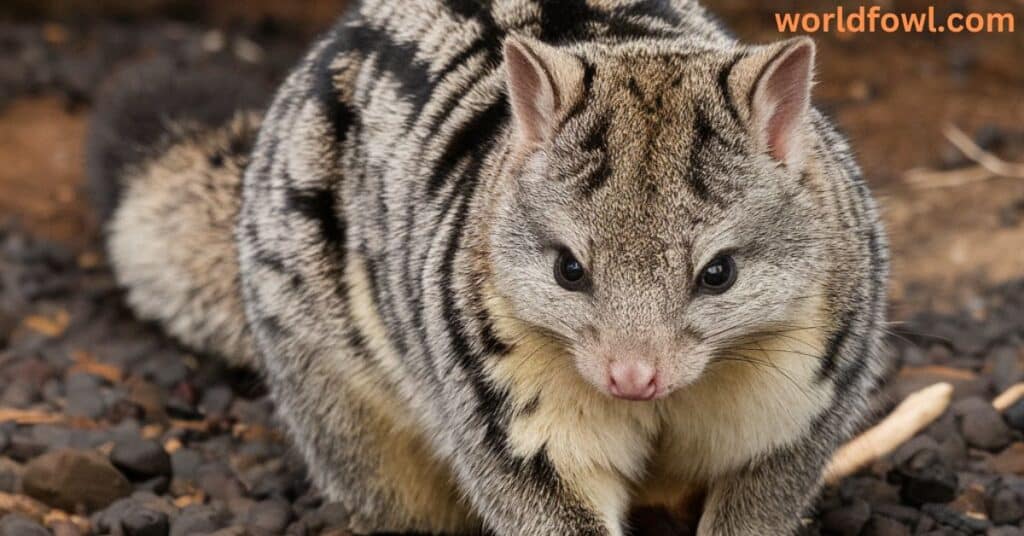
As predators and scavengers, quolls play a critical role in their ecosystems by keeping populations of smaller animals in check. Their diet mainly consists of small mammals, birds, insects, and reptiles. Quolls are opportunistic feeders, meaning they will eat whatever prey is available, including carrion when other food sources are scarce.
Quoll Diet Breakdown
- Small Mammals: Quolls prey on smaller mammals, including rodents, marsupials, and even other small carnivorous animals.
- Birds: Quolls are agile climbers and can often be found hunting birds in trees or on the ground.
- Reptiles and Insects: They also hunt reptiles and insects, contributing to controlling pest populations.
- Carrion: As opportunistic feeders, quolls scavenge on carrion, making them important for the ecosystem’s cleanup.
Quolls are nocturnal marsupials, which means they hunt primarily at night. Their sharp claws, keen sense of smell, and agility in climbing trees and rocks make them highly efficient hunters.
Hunting Techniques and Predatory Behavior
Quolls are solitary hunters and prefer stalking their prey quietly, using their keen senses to track animals. They are agile, fast, and excellent climbers, which gives them the advantage when hunting. While they are solitary marsupials, they will sometimes hunt in areas with abundant prey, sharing territories with other quolls, but maintaining their own spaces.
Quoll Defensive Behavior
While quolls are carnivorous predators, they are not naturally aggressive toward humans. They are highly territorial animals that avoid human contact. However, like many wild animals, quolls can exhibit defensive behavior when they feel threatened or cornered.
- Hissing: A quoll may hiss loudly if it feels threatened or startled. This is a warning sign to back off.
- Snapping: A quoll may snap at a potential threat, especially if it’s protecting its young or territory.
- Biting: If a quoll feels like it has no other option, it may bite in self-defense. Their sharp teeth can cause minor injuries, but it’s rare for quolls to actively attack humans.
It’s important to understand that quolls are not inclined to attack humans unless they feel severely threatened. Their instinct is to flee rather than fight, making them more likely to avoid human interactions altogether.
See Also : Do Seagulls Attack Humans? The Surprising Truth!
Do Quolls Attack Humans?
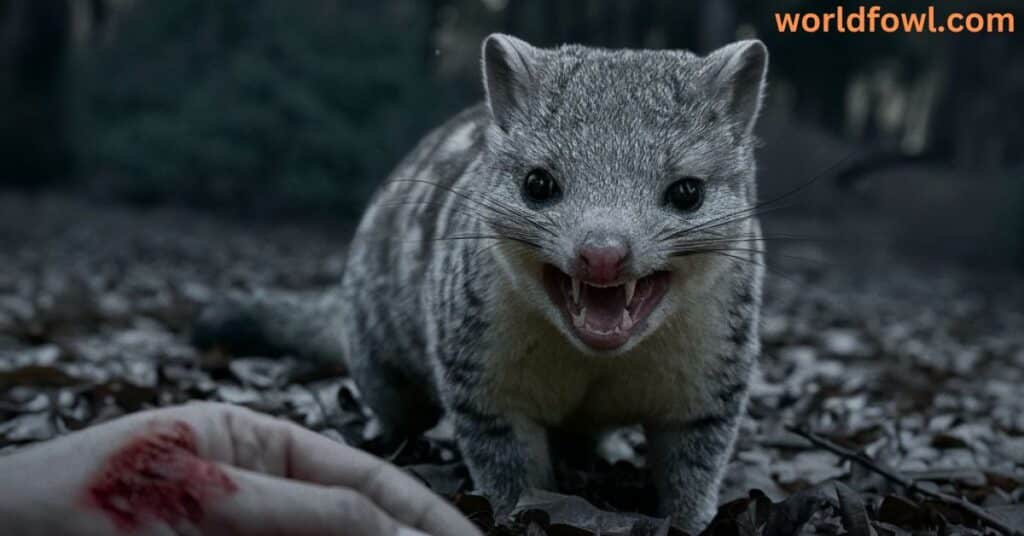
Natural Behavior Toward Humans
Do quolls attack humans? The short answer is: no. Quolls are generally not aggressive toward humans. In fact, they are more likely to avoid human presence than to actively seek confrontation. Their natural behavior is to be wary of humans, and they tend to stay away from populated areas, preferring remote and undisturbed environments where they can hunt freely.
In cases where quolls have been observed in urban areas or near human habitation, they were likely searching for food or shelter rather than seeking out humans for aggression. Human-wildlife interaction is uncommon and typically harmless.
When Do Quolls Display Aggression?
While quolls are not naturally inclined to attack humans, they may react aggressively if they feel threatened or cornered. This could occur if:
- They are disturbed while eating.
- They are trapped or unable to escape.
- A mother is protecting her young.
- They are harassed or provoked in any way.
However, even in these circumstances, quolls usually do not pose a significant threat to humans. Defensive actions, such as hissing or snapping, are typically the extent of their aggression.
See Also : Do Moose Attack Humans? Caught in the Crosshairs!
Are Quoll Attacks Dangerous?

Quolls are carnivorous predators, and like most wild animals, they can pose a small risk if provoked. However, it’s important to understand that attacks on humans are extremely rare.
- Injury from Bites or Claws: Quolls have sharp claws and teeth, and while a bite or scratch may cause minor injuries, it’s highly unlikely that a quoll will attack unless it feels directly threatened.
- Zoonotic Diseases: Like other wild animals, quolls may carry diseases that can be transmitted to humans. These zoonotic risks are relatively low, but diseases such as toxoplasmosis and leptospirosis can potentially be contracted through contact with quoll saliva or urine.
That being said, the danger from quolls is minimal, especially compared to the risks posed by larger, more aggressive wild animals. It’s always advisable to exercise caution around wild animals, but quolls are not typically dangerous.
See Also : Do Quails Attack Humans? A Deep Dive!
How to Avoid Quoll Encounters
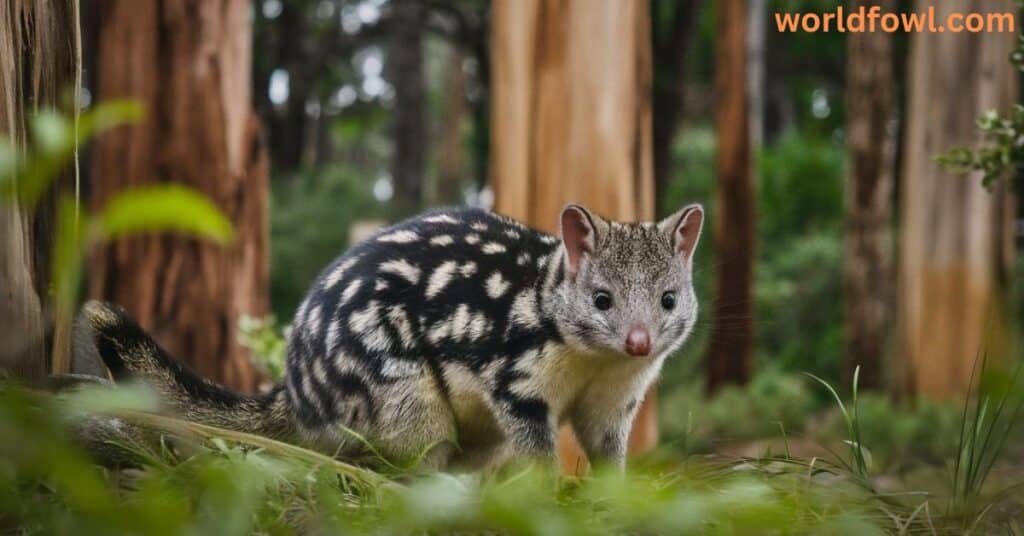
While quoll encounters are rare, it’s important to take safety precautions when venturing into areas where quolls are known to live. Here are some tips for avoiding quoll encounters:
- Keep a Safe Distance: If you spot a quoll in the wild, observe from a distance. Avoid approaching or trying to interact with the animal.
- Secure Your Food: Quolls are opportunistic feeders, and they may approach campsites in search of food. Always store food securely and avoid leaving scraps around.
- Be Aware of the Environment: Quolls prefer remote areas like rainforests, woodlands, and rocky outcrops. If you’re hiking or camping in these areas, stay aware of your surroundings.
- Respect Their Territory: If you come across a quoll, don’t corner it or invade its space. Give the animal room to flee if it feels threatened.
The Importance of Quolls in the Ecosystem
Quolls play a crucial role in their ecosystem. As predators and scavengers, they help keep the populations of smaller animals in check, preventing overpopulation of certain species. They also contribute to the cleaning up of carrion, which helps maintain a balanced environment.
However, quolls are under significant threat from habitat loss, introduced predators like foxes and feral cats, and climate change. Conservation efforts are essential for ensuring that quolls continue to thrive in their natural habitats.
Conservation of Quolls
Efforts to conserve quolls include:
- Habitat Protection: Ensuring that quolls have access to undisturbed habitats is essential for their survival.
- Control of Introduced Predators: Programs to reduce the numbers of foxes, feral cats, and other predators are crucial for protecting quoll populations.
- Captive Breeding: Some species of quolls are bred in captivity and reintroduced into the wild to boost population numbers.
FAQs
Are quolls aggressive towards humans?
No, quolls are not aggressive toward humans. They tend to avoid human contact and are generally non-threatening.
What should I do if I see a quoll in the wild?
Observe the quoll from a distance and avoid disturbing it. Never approach or attempt to touch a wild quoll.
Can quolls carry diseases that affect humans?
Yes, like many wild animals, quolls can carry zoonotic diseases, though the risk of transmission is low.
How common are quoll sightings in urban areas?
Quoll sightings in urban areas are rare, as they prefer remote, undisturbed habitats. However, habitat loss can push them closer to human settlements.
Are there any conservation efforts for quolls?
Yes, several conservation efforts are underway to protect quolls, including habitat restoration, predator control, and captive breeding programs.
Conclusion: Do Quolls Attack Humans?
To answer the question definitively: No, quolls do not attack humans. These fascinating marsupials are not naturally aggressive and, despite their reputation as carnivorous predators, they are more likely to avoid human contact than to seek confrontation.
Quolls are shy, territorial creatures that thrive in their natural habitats, where they play a vital role in maintaining ecosystem balance. They are not a danger to humans unless provoked, and even then, their defensive behavior is usually limited to hissing or snapping. With proper respect for their space and an understanding of their behavior, we can live harmoniously with quolls in the wild.
Conservation efforts are critical for preserving quolls and ensuring they continue to fulfill their important ecological role. While human-wildlife interaction with quolls is rare, it is important to remember that these creatures deserve our respect and protection, rather than fear.

Henry James is a seasoned blogger and a passionate storyteller on “World Fowl.” With years of experience crafting engaging content, he brings a unique blend of expertise and creativity to his writing. Henry specializes in exploring diverse topics with depth and clarity, captivating readers worldwide.

